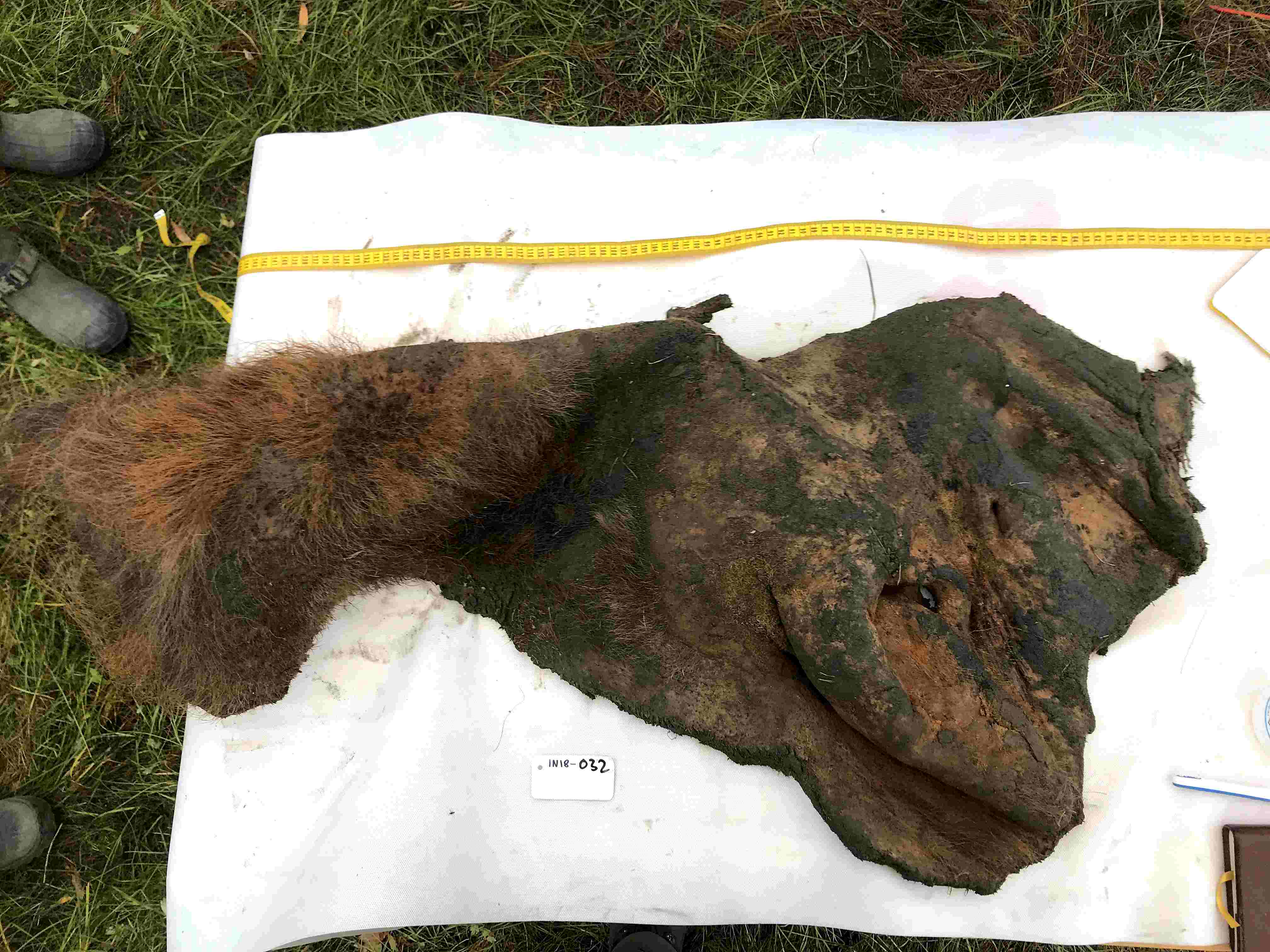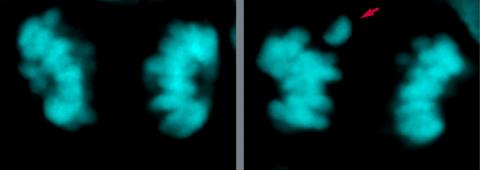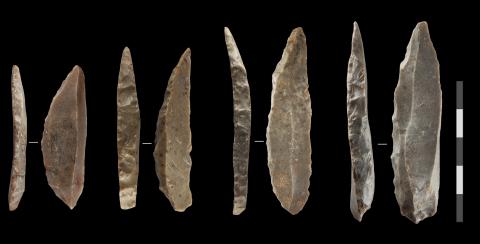Mammoth DNA recovered for the first time with its chromosome structure
An international team of scientists, including researchers from the CRG and the CNAG (Barcelona), have managed to recover DNA remains from a female woolly mammoth that died in Siberia 52,000 years ago. The novelty is that, for the first time, the remains conserve the three-dimensional structure in the form of chromosomes, which makes it possible to investigate the genes that were active. According to one of the authors of the study, the results of which are published in the journal Cell, this type of discovery "changes the rules of the game, because knowing the shape of the chromosomes of an organism allows us to assemble the entire DNA sequence of extinct creatures and obtain information that was not possible before".

52,000-year-old wooly mammoth skin after it was excavated from permafrost. The Cell study shows that fossils of ancient chromosomes survive in the skin. Photo by Love Dalén, Stockholm University.
Juan L. Cantalapiedra - mamut cromosomas EN
Juan L. Cantalapiedra
Senior Scientist in the Paleobiology Department of the National Museum of Natural Sciences (Madrid)
This study is groundbreaking because it confirms that cold arctic conditions can preserve not only the sequence of DNA bases from an extinct animal (in this case a 52,000-year-old mammoth), but also the structure that houses and organises DNA in living animals: proteins of different types. This structure is responsible for packaging DNA into more complex structures: chromosomes.
The scientists leading this study have been able to study the chromosome structure of an extinct animal for the first time. It is a milestone in palaeogenomics, the science that studies the genetic material of animals that no longer inhabit our planet. The miracle is due to the fact that the organic material froze very quickly in very low humidity conditions. The result is that the chromosome structures were dehydrated in a process known as freeze-drying (for example, the process used to make powdered milk). This process caused the genetic material to crystallise. Thus, although the DNA and the proteins that protected it suffered some fragmentation over time, the fragments remained in place, which has facilitated the reconstruction of the structure with great precision.
The study is a major undertaking. They have used advanced techniques to compare the material obtained from the mammoth with the Asian elephant, its closest living relative (interestingly, Asian elephants are closer cousins to mammoths than to African elephants). So far we knew about the differences in the genetic sequence between mammoths and modern elephants. But this sequence is only part of the picture. The way DNA is packaged and organised into chromosomes (epigenetics) has a fundamental impact on how this genetic information is translated into instructions during the development of an embryo and for the rest of the animal's life.
For those who dream of using fossil DNA information to recover extinct species, this is an exciting discovery. Having the complete DNA sequence of an extinct organism (which is only available for very recent specimens) is of no use if we do not know in detail how this DNA is organised into chromosomes. It is for this reason that as long as similar discoveries are not made in dinosaurs (something very unlikely, if not impossible) their 'de-extinction' will remain pure science fiction
[As for limitations] The authors themselves acknowledge that they have not been able to compare mammoth and Asian elephant tissues from the same anatomical part, which could yield more similarities in structure between the two species. They also mention that, being such a pioneering study, much remains to be done to improve the models and analyses they have used throughout the research.
Carles Lalueza-Fox - mamut cromosomas EN
Carles Lalueza-Fox
Director of the Museum of Natural Sciences of Barcelona and specialist in DNA recovery techniques in remains from the past
It is a study that provides new biological evidence about the mammoth genome, especially its three-dimensional structure.
The experimental approach is really fascinating. This technique can provide data on the genomic architecture of extinct species that was not available until now. It remains to be seen how many species can be analysed in this way, as the preservation conditions in a cold and dry episode are very special and it seems likely that they can only occur in extremely cold climates.
Sandoval-Velasco et al.
- Research article
- Peer reviewed
- Animals



